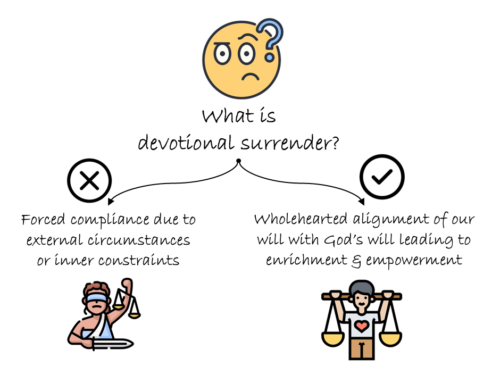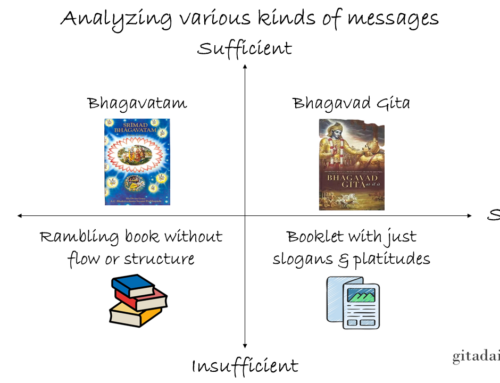Prospective spiritual seekers are often perplexed by a question: which path to follow? This important question merits deep deliberation. Still, if agonized over for too long, it can also lead to paralysis by analysis.
How can we find a balance between inadequate analysis and excessive analysis? To understand the answer, let’s compare spiritual growth to mountain-climbing. Before climbing a mountain, we would naturally compare various paths to the peak. But to get to the peak, we would have to eventually take some path and start climbing.
The mountain’s bottom is like material consciousness and its top, spiritual consciousness. If a path takes us up from material consciousness to spiritual consciousness, following it will make us less dependent on worldly things and more attracted to spiritual truths. And this transformation has to be experienced – it can’t be arrived at by mere analysis.
With the contemporary world presenting us thousands of paths and the fast-paced culture filling our finite lifespans with myriad engagements, if we wait till we have compared all paths, we will be waiting till the rest of eternity.
To help us analyze, the Bhagavad-gita overviews various paths for seekers at different levels in their spiritual evolution to evolve further. To help us commit, it stresses that the indwelling supreme, Krishna, is guiding everyone’s wanderings (18.61) – if we sincerely desire to be spiritual, he will prompt us to the right path, and alert us about wrong ones.
Stressing the balance between analyzing paths and accessing higher reality, the Gita calls for both contemplating and committing (18.63). And Arjuna responds by committing to the path of divine love by accepting Krishna’s will (18.73).
Thus, by a combination of intellectual evaluation and personal commitment, we can attract a power far greater than ours to guide our spiritual evolution to perfection.
To know more about this verse, please click on the image
Explanation of article:
Podcast:






Leave A Comment